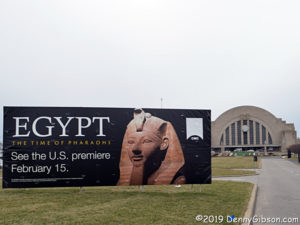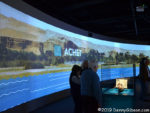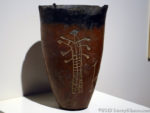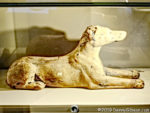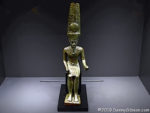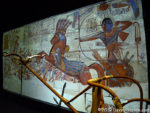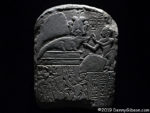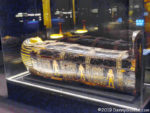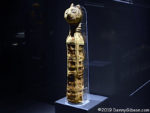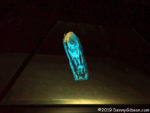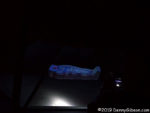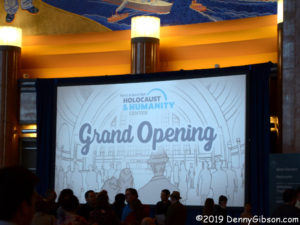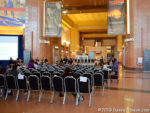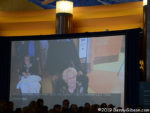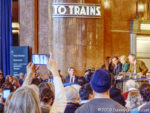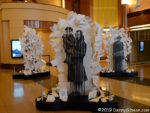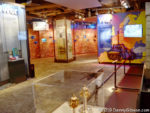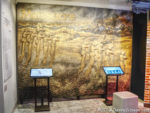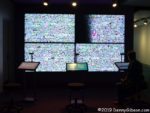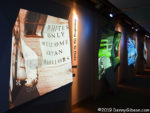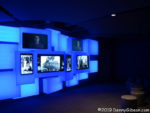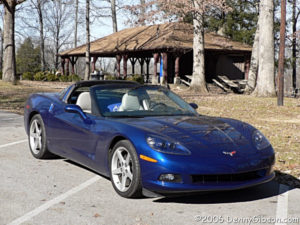 I experimented with running away from home for a holiday by spending Thanksgiving of 2005 in Nashville, Tennessee. It went so well that I ran away for both Thanksgiving and Christmas in 2006. I’ve rarely had a shortage of things to be thankful for, and in autumn of 2006 one of those things was a new car. The reverseless 1998 Corvette had made it home from Illinois but hopes of a full recovery were dim. No one outside the dealer even wanted to discuss opening the transmission and no one there seemed overly eager — or competent. Replacing it wasn’t a very promising solution either. Used gear boxes of the appropriate flavor were in short supply and dearly priced let alone the problem of finding someone to do the swap. I half jokingly asked the dealer to give me a price on a leftover blue coupe and he came back with a completely serious, and surprisingly reasonable, offer. It was an offer I could, but didn’t, refuse. I purchased the pictured car in early October and introduced it to road-tripping later in the month. It got warm enough on the way home from Thanksgiving in Bryson City, North Carolina, to get some topless photos in Kentucky’s Levi Jackson State Park. The full trip journal is here.
I experimented with running away from home for a holiday by spending Thanksgiving of 2005 in Nashville, Tennessee. It went so well that I ran away for both Thanksgiving and Christmas in 2006. I’ve rarely had a shortage of things to be thankful for, and in autumn of 2006 one of those things was a new car. The reverseless 1998 Corvette had made it home from Illinois but hopes of a full recovery were dim. No one outside the dealer even wanted to discuss opening the transmission and no one there seemed overly eager — or competent. Replacing it wasn’t a very promising solution either. Used gear boxes of the appropriate flavor were in short supply and dearly priced let alone the problem of finding someone to do the swap. I half jokingly asked the dealer to give me a price on a leftover blue coupe and he came back with a completely serious, and surprisingly reasonable, offer. It was an offer I could, but didn’t, refuse. I purchased the pictured car in early October and introduced it to road-tripping later in the month. It got warm enough on the way home from Thanksgiving in Bryson City, North Carolina, to get some topless photos in Kentucky’s Levi Jackson State Park. The full trip journal is here.
It was the blue ‘Vette that, one month later, carried me over the length of the Natchez Trace Parkway after a Christmas in Natchez, Mississippi, and those two trips were just the beginning. It seems the rate of my road-tripping had increased a bit, and this car participated in a total of thirty-six documented trips over the next four and a half years. At present, that’s the most of any car I’ve owned.
This car took me not only on my initial Christmas Escape Run but on all but one of the Christmas trips I made while I owned it. After Natchez, came New Orleans then Gibsonton, Florida, then Lubbock, Texas. On the way north from New Orleans in 2007, road fan and Hudson guru Alex Burr joined me for the Jacksonville, Mississippi, to Memphis, Tennessee, segment. In 2008, I continued on to Key West after Christmas in Gibsonton. You’ll note that all of these destinations are to the south as is proper for December drives in low clearance cars. The idea was to get away from the cold and snow and that worked rather well with a single exception.
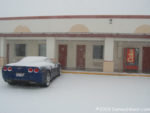 I retired in November of 2009, and that put me in a position to drive to the western end of US-62 which I’d been putting off because of the time required. That trip journal is here. Even though the trip encompassed Christmas Day, exactly where I spent it wasn’t all that important. I reached Altus, Oklahoma, the evening of the 23rd with thoughts of driving to Lubbock, Texas, the next day. Morning saw those thoughts change significantly. Snow had moved in overnight and was now accumulating. The picture at left was taken about 9:00 AM. Oklahoma City, just over a hundred miles north east of Altus, would ultimately get a record 14 inches and the airport would eventually close. It was then I had a minor epiphany: It didn’t matter. I was retired and didn’t have to be back at work on some rapidly approaching Monday morning or any other morning. Other than adding expense, extending my trip by a day or two or more didn’t really hurt. I walked to the office and booked another night.
I retired in November of 2009, and that put me in a position to drive to the western end of US-62 which I’d been putting off because of the time required. That trip journal is here. Even though the trip encompassed Christmas Day, exactly where I spent it wasn’t all that important. I reached Altus, Oklahoma, the evening of the 23rd with thoughts of driving to Lubbock, Texas, the next day. Morning saw those thoughts change significantly. Snow had moved in overnight and was now accumulating. The picture at left was taken about 9:00 AM. Oklahoma City, just over a hundred miles north east of Altus, would ultimately get a record 14 inches and the airport would eventually close. It was then I had a minor epiphany: It didn’t matter. I was retired and didn’t have to be back at work on some rapidly approaching Monday morning or any other morning. Other than adding expense, extending my trip by a day or two or more didn’t really hurt. I walked to the office and booked another night.
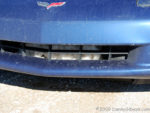 I was prepared to hang out in Altus a bit longer, but when morning came, the road to Lubbock was reported clear. I drove, cautiously, to Lubbock on Christmas Day. The big attraction for me, the Buddy Holly Center, was closed, of course, but I could and did visit Holly’s grave. I visited the center early the next day then headed on to Carlsbad, New Mexico. At a stop near Carlsbad, I noticed some snow in the grill and snapped the picture at right. At the time, I didn’t get down to study it at all closely but I would eventually discover things that had me replaying the graveside visit in my mind.
I was prepared to hang out in Altus a bit longer, but when morning came, the road to Lubbock was reported clear. I drove, cautiously, to Lubbock on Christmas Day. The big attraction for me, the Buddy Holly Center, was closed, of course, but I could and did visit Holly’s grave. I visited the center early the next day then headed on to Carlsbad, New Mexico. At a stop near Carlsbad, I noticed some snow in the grill and snapped the picture at right. At the time, I didn’t get down to study it at all closely but I would eventually discover things that had me replaying the graveside visit in my mind.
At five inches, the snowfall in Lubbock had also set a record. There is, understandably, no snow handling equipment around so the snow essentially stays where it falls or drifts until it melts. A one lane path to and past Holly’s grave had been quite passable with bare gravel alternating with patches of snow a few inches deep at most. After stopping at the grave, I’d driven on, found a place to turn around, then returned along the same path. When I saw a car heading my way on the road I’d entered on, I drove on past and turned at the next intersection. I immediately knew that was a mistake. The snow had drifted several inches deep here and the road was covered for several yards. I also knew it would be a mistake to stop. Maintaining my momentum was my best hope so I plowed — literally — ahead. I believed I had escaped unscathed but eventually realized that the snow had cracked the hinged air dam and slightly damaged some of the tubing directing air to the brakes. All was repaired, at reasonable cost, when I got home.
The only other incident with this car that could qualify as a misadventure occurred just a few days later on the same trip. I picked up (and foolishly pulled out) a nail in a front tire. Because waiting for a matching Goodyear would have required several days, I ended up buying a pair of Michelins in order to avoid mismatched tires on an axle. I rode home with the old undamaged front tire in a giant plastic bag. It was still in the bag and went with the car when I sold it.
My Previous Wheels: Chapter 34 — 2003 Pontiac Vibe
My Next Wheels: Chapter 36 — 1963 Plymouth Valiant
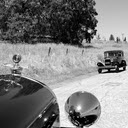 This picture is from my 2011 Lincoln Highway Conference trip. It’s a trip that was in doubt almost to the day it started. Dad’s health was not good and I worried about traveling for any length of time. I apparently decided I could probably at least dash to and from the conference and sent in my registration just ahead of the deadline. Dad’s health took a bad turn near the end of May and I cut short a St. Louis trip to hurry back. He improved a bit but never really recovered. He died on June 2. When I eventually returned to thinking about the trip, my initial thoughts were to cancel it. Then I realized there was no reason. There was nothing for me to do after the funeral and long solo drives sounded much more useful than sitting at home.
This picture is from my 2011 Lincoln Highway Conference trip. It’s a trip that was in doubt almost to the day it started. Dad’s health was not good and I worried about traveling for any length of time. I apparently decided I could probably at least dash to and from the conference and sent in my registration just ahead of the deadline. Dad’s health took a bad turn near the end of May and I cut short a St. Louis trip to hurry back. He improved a bit but never really recovered. He died on June 2. When I eventually returned to thinking about the trip, my initial thoughts were to cancel it. Then I realized there was no reason. There was nothing for me to do after the funeral and long solo drives sounded much more useful than sitting at home.
